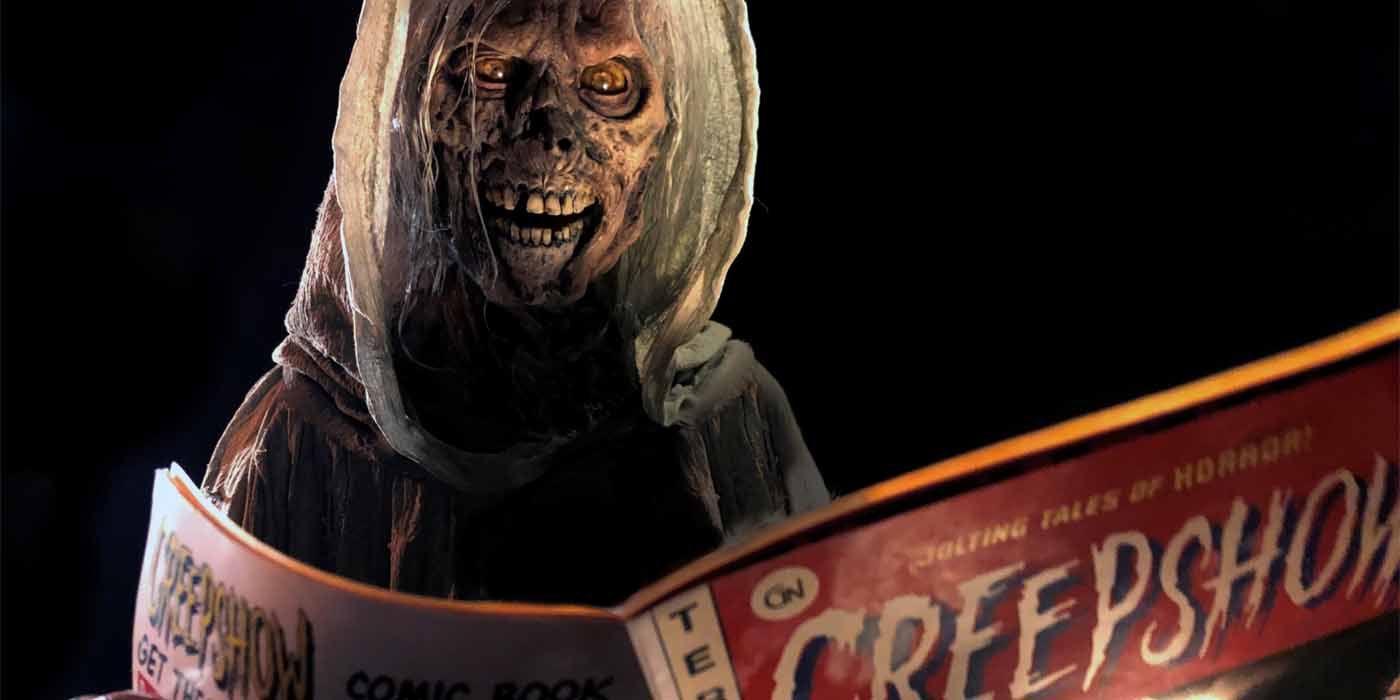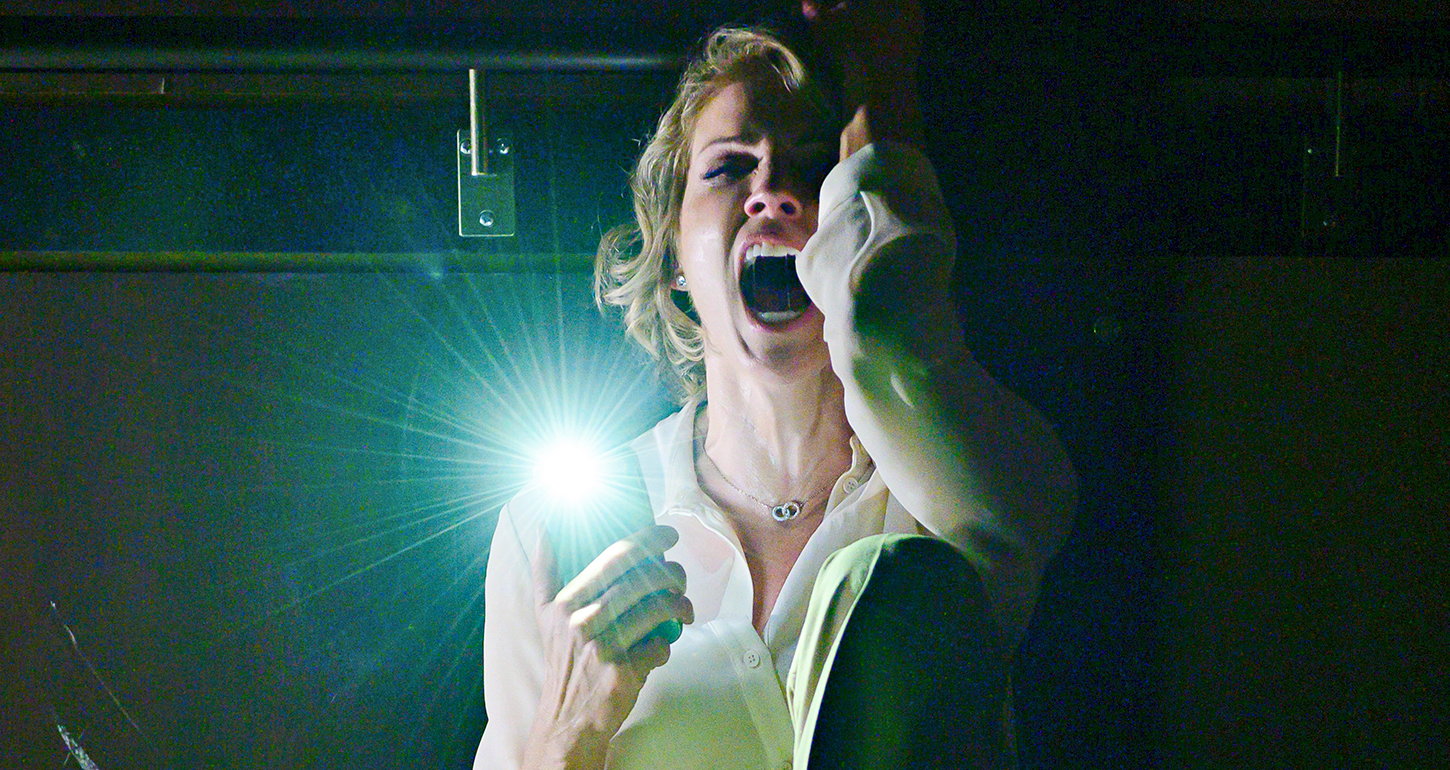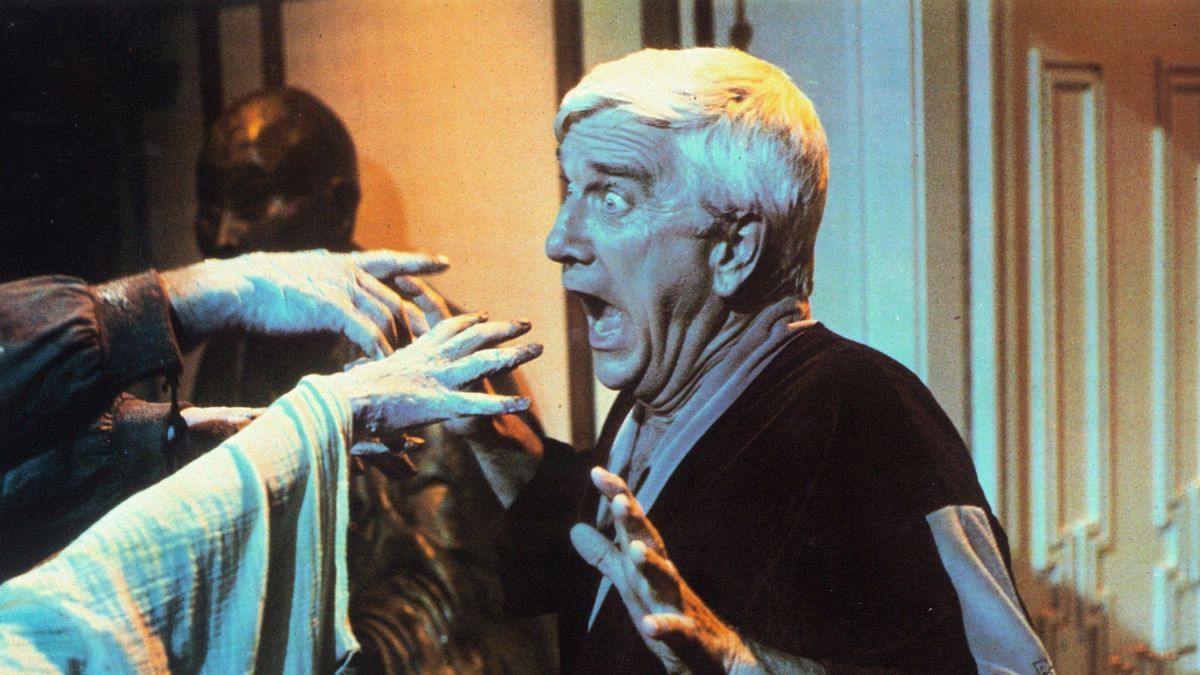Few cult classics are as widely beloved as Creepshow. Directed by George Romero and written by Stephen King, the '80s cinematic tribute to 1950s horror comics featured a cast of character actors in an anthology of short spooky stories. Audiences laughed and shivered watching the stylish collection. It was, by design, the sort of film you put on at a party with friends -- if, of course, you all shared a morbid sense of humor.
However, like picking up a random anthology comic out of context, the film always felt like part of a longer series. Creepshow 2 helped continue the story, but, in the decades since, the property has remained silent (save for an in-name-only Creepshow 3). A new series from Shudder, the horror-only streaming service, however, offers fans a chance to return to this beloved property.
RELATED: Creepshow Reboot Debuts First Look at Host, Announces Show's Cast, Directors
Each story, roughly twenty minutes, has a different sort of horror story to tell, split into two smaller stories. This is to both the original Creepshow movies and the new series' credit. If a particular story doesn't satisfy you, you don't have to wait long for the next one. Thankfully, the pilot episode offers two effectively spooky tales with strong concepts and uncomfortably open-ended endings.
The first story, "Grey Matter," based on the Stephen King short story of the same name, has Tobin Bell (Saw) as a small-town Sheriff at a store when, elsewhere, a sword strikes. A young boy, Ritchie, enters the store and, distressed, tells the staff his father has "changed" and that he never wants to go back home. The Sheriff and his lifelong doctor friend go to take a look at the father. They find a ransacked house covered in strange, unknown substances.
But to make things more complicated, the storm causes a blackout, and Ritchie, who is staying behind with a kindly shop owner, seems hesitant to explain how his father's addiction to alcohol has spiraled into dark, monstrous territory thanks to some strange, fungal grey thing.
The whole story is a slow-burn build-up to the end, but, along the way, leaves you feeling a profound sense of sickness and disgust. It exploits the destructive, transformative dangers of body horror and physical decay, building and building upon every new piece of information until it culminates in its grotesque, almost Lovecraftian finale, that, admittedly, feels a little rushed in the final seconds.
It is hard to say this story captures the original spirit of Creepshow. It's not necessarily a fun, light-hearted story. What it is, however, is a disturbing allegory for addiction and alcoholism. It's a Stephen King story.
The second story, "House of the Head," features a young family who purchases a custom-made dollhouse for their only daughter. She keeps a family of figurines, the Smith-Smiths, complete with a family dog, safe inside it. One day, the daughter notices her dolls are all in different positions. She finds a strange, detached head on the table of her dollhouse. Every time she checks the house, something changes -- sometimes even when she glances away for a second. She becomes convinced that her little dollhouse is haunted.
As she adds figurines to her dollhouse, the toys inside seem to follow-through a plot straight out of a horror movie, while the young girl tries desperately to save her toy home. But is this toy house really haunted, or is the nightmare present real only in the mind of a young isolated girl?
It's a short horror story that, like the prior one, starts with a simple premise. Some might be disappointed by how it ends, but, in some ways, the ending allows the suspense and mystery to linger on long after it ends. Fear of the unknown is one of the oldest fears man has ever known.
The acting in Creepshow is consistently good and the writing is concise and focused. As a horror anthology, it opens with one goal: make you uncomfortable. To that end, it succeeds -- even surpassing expectations. It doesn't offer shocking visions of horror or leave you with monstrous images burned into your eyes, no, but it piles on dread and leaves you with pleasant shivers.
There are references to the original film in this series -- with the most noteworthy being the reappearance of a certain crate or the arrival of mold growing over beer. But Creepshow often feels strangely disconnected from the original film. It isn't particularly pulpy or over-the-top. The comic book aesthetic comes into play only on occasion and between stories. It never recreates that feeling the original movie had.
This might be due in part to its limited budget. Expensive effects are shown only when absolutely necessary to the story. This forces the directors and writers to depend on atmosphere and tension rather than monsters, as in the original. Fans of the Romero original expecting cake-seeking zombies or cockroaches spraying out from a man's chest might leave disappointed they didn't get exactly what they expected.
However, it would be a mistake to discount this series just because it isn't as over-the-top as the original film. This is a must-watch horror anthology series for fans.
What it does achieve, however, is being surprisingly unsettling. Both episodes are small, personal horror stories that capture an element of private terror. It utilizes its budget well by cutting corners when needed. Locations are limited. Special effects are minimal. The cast is minimal. All of this keeps you almost trapped in a very focused narrative of fear. You are left waiting for a pay-off that may choose not to come at all.
Creepshow exists in conversation with its predecessor, rather than as a continuation. It feels more like a modern version of The Outer Limits. It isn't a party like the original, but rather, captures the creeping feeling of isolation that comes when the guests leave and the lights are out.
Creepshow debuts Thursday, Sept. 26, on Shudder.
KEEP READING: The 2010s Were the Best Decade for Horror (But One Film Stands Out)



